Here are some of the best canal routes for you to explore on your next visit to France. Chart your course through attractive French waterways, villages and towns, historic and UNESCO World Heritage sights, and even some fine wine tasting opportunities.
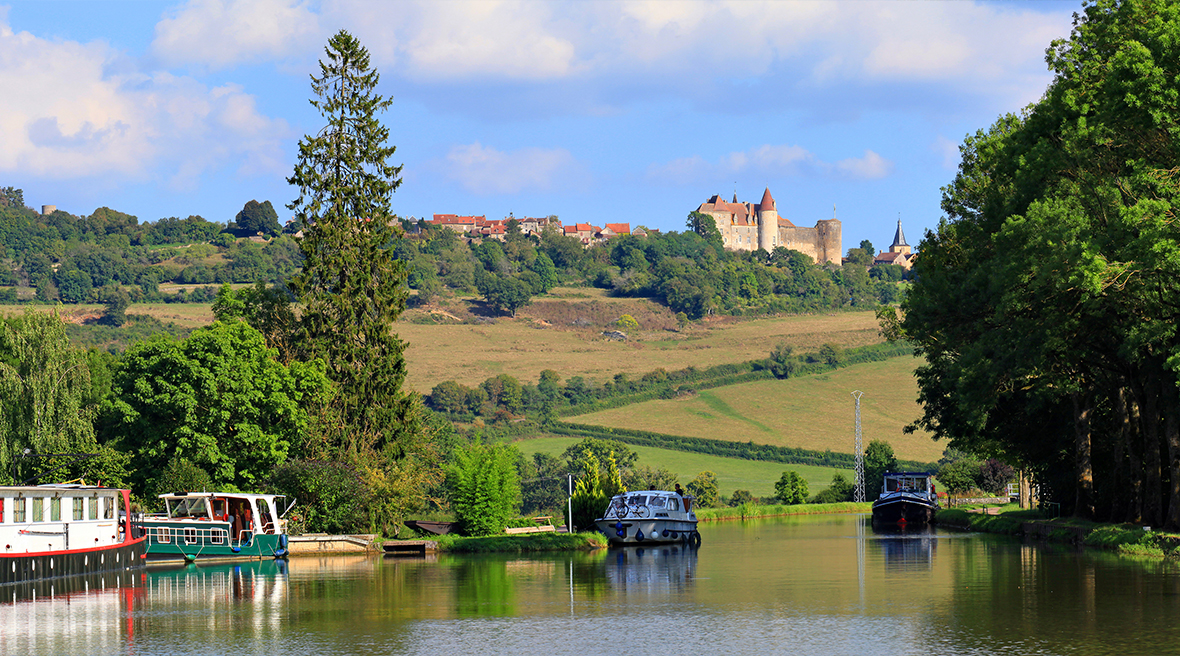
The stunning Châteauneuf-en-Auxois can be seen from this canal
Planning your trip
Travelling to France couldn’t be easier with LeShuttle. You’ll arrive in Calais from Folkestone in just 35 minutes. From there, plan your journey to one of the many beautiful canals France has to offer. Journey times will depend on where you choose to begin on the water and how long you intend to spend exploring.
Canal de Bourgogne
The Burgundy Canal is a canal that flows though Burgundy in central eastern France. A 322km long masterpiece of pre-Industrial Revolution engineering, the canal passes through Dijon en route to the south of France and links two of France’s greatest rivers, the Seine and the Loire. It crosses some beautiful and unspoilt countryside, including the Loire Valley.
Canal de Bourgogne also connects the river and valleys of Yonne at Migennes with Saône at Saint-Jean-de-Losne. Alongside Yonne you’ll find acres of countryside landscape dotted with remarkable sites. These include the Renaissance châteaux of Tanlay and Ancy-le-Franc and the medieval city of Châteauneuf-en-Auxois. Be aware that this is the only side of the canal where you can hire a boat.
The Saône side of the canal holds the Ouche Valley, which is filled with traditional French villages, farms, and forests. A much-loved feature of the Canal de Bourgogne is the tunnel connecting Pouilly-en-Auxois with Escommes, which provides a vital link between northern and southern France. More than two-and-a-half miles in length, the tunnel was carved from rock in the 1820s. It’s a narrow crossing, but traffic is safely regulated by the lock keepers at either end.
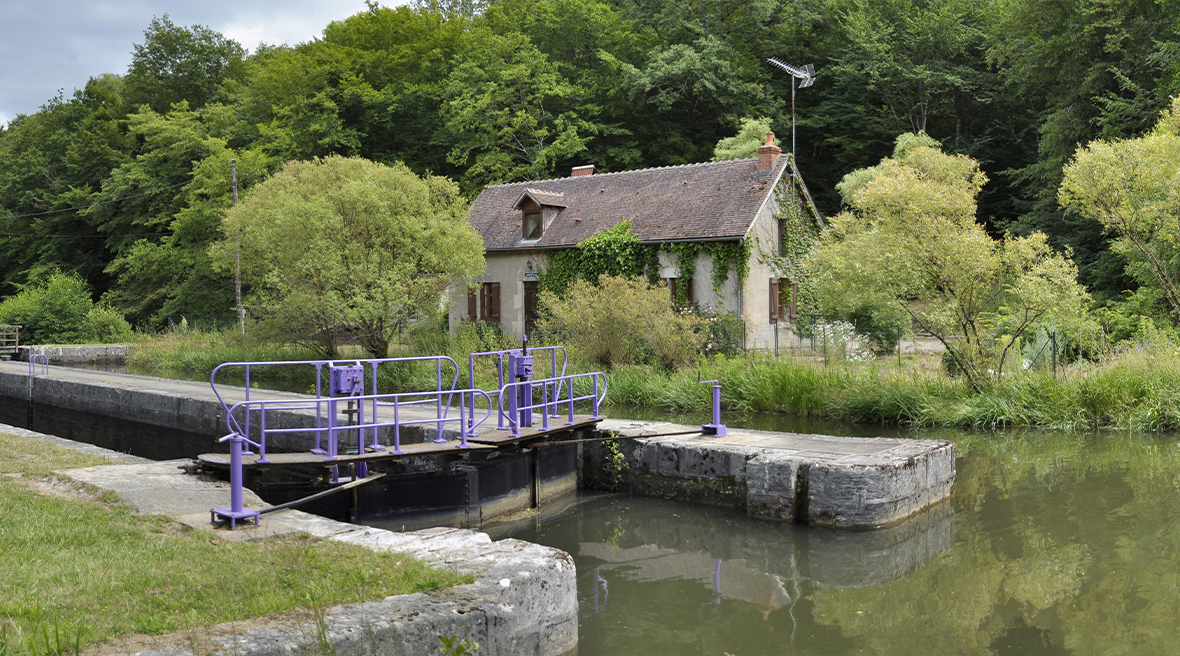
The Canal du Nivernais runs through many of the vineyards of the Auxerrois region
Canal du Nivernais
A wonderful canal for wine lovers, the Canal du Nivernais runs right through many of the vineyards of the Auxerrois region. It’s 174km in length, has 116 locks, and was originally used to transport wood from the Morvan towards Paris. If you make a stop in Clamecy, known locally as the capital of the valleys of the Yonne, you can visit museums dedicated to the history of these ‘wood floaters’.
The starting point of the Nivernais Canals lies in Auxerre, a town steeped in art and history. Cobbled streets lead to its Cathedral of St Etienne and the Abbey of St Germain, both wonderful examples of gothic architecture. The abbey contains ancient tombs decorated with what is thought to be the oldest murals in France.
Sample local wines at Auxerre or the other villages along the canal such as Coulanges-la-Vineuse, Irancy and Saint-Bris-le-Vineux. If you have time in Saint-Bris-le-Vineux, pay a visit to Les Caves de Bailly Lapierre — huge wine cellars that were once dedicated to growing mushrooms.
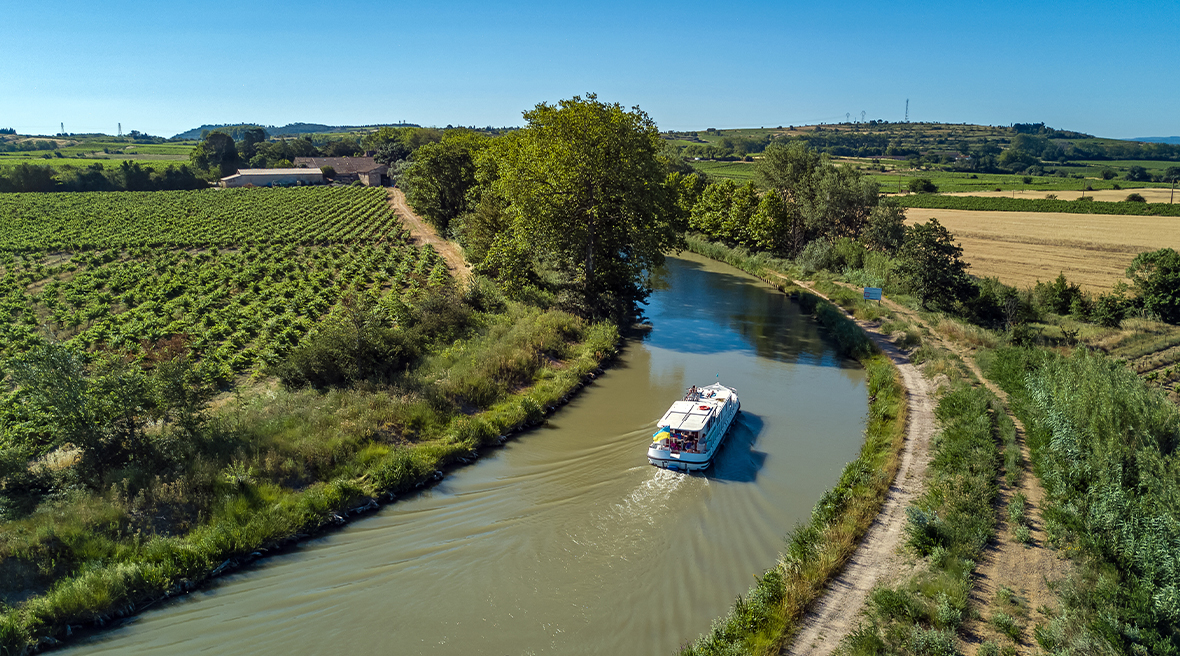
The Canal du Midi takes you through some beautiful French countryside
Canal du Midi
Known as ‘the canal of two seas’ since its network of waterways connects the Atlantic to the Mediterranean Sea, the Canal du Midi runs for 240km, features 91 locks and a tunnel, as well as aqueducts. Once a major trade route and a UNESCO World Heritage Site since 1996, today its banks play host to wine tasting, cycling, and sightseeing at medieval villages all the way from ‘the pink city’ of Toulouse to the Mediterranean Sea.
Along its banks are lush vineyards and historical sights. For history lovers, Carcassonne is a real gem, sitting on a hilltop and surrounded by watchtowers and Roman fortresses. It also boasts a fairy tale castle, Chateau Comal, built in the 12th century. Stop here for wine tasting in the heart of the Languedoc wine region.
The port of Le Somail towards the start of the canal gets its name from the old French word for ‘sleep’, as it was built as a stop-off point for traders on long journeys along the canal. Le Somail is home to some remarkable buildings, but bookworms should visit the incredible book shop aptly named ’trouve-tout-du-livre’ which translates to ‘find all the books’. It’s thought to hold the largest collection of old and secondhand books in Europe.
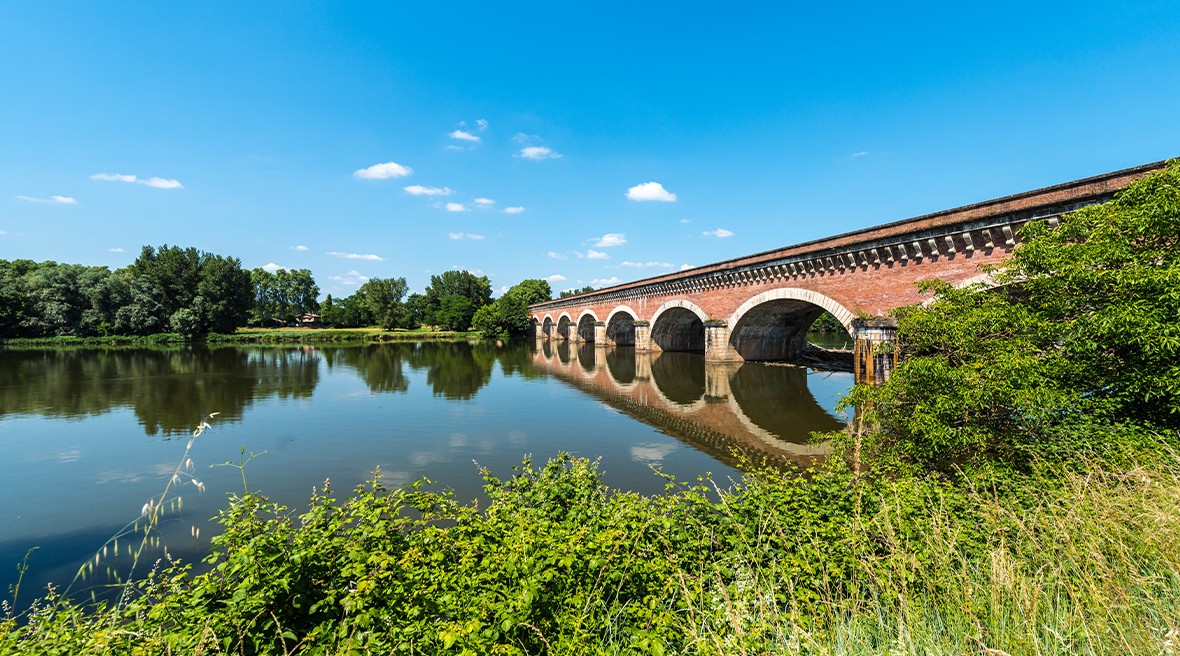
The Cacor canal bridge, built in 1867 from Toulouse brick and Quercy stone
Canal de Garonne
This canal is in fact a continuation of the Canal du Midi, leading North from Toulouse to Castets en Dorthe where it joins the river Garonne, which flows all the way to Bordeaux. It was created in the 19th century because the river Garonne is more turbulent, and boats needed to make safe trips between the Mediterranean and the Atlantic. The canal has 53 locks and is 193km long, crossing the river Agen by way of a beautiful aqueduct. Pont-Canal d’Agen, at 580metres, is the second-longest canal-bridge in France, built entirely of cut stone and supported by 23 arches.
The city of Agen itself is somewhat of a hidden gem. Stop here to soak up quaint timber-framed houses, the 12th century Cathedral of Saint-Caprais, and Le Sénéchal, the oldest private residence in Agen (and one of the prettiest). Be sure to taste the prunes (Ente plums) that are grown in the fields here and are steeped in brandy as a local delicacy.
Another highlight is the town of Moissac where you can explore the Abbey of Saint Pierre and see the Cacor canal bridge, built in 1867 from Toulouse brick and Quercy stone. Float over this bridge to cross the River Tarn.
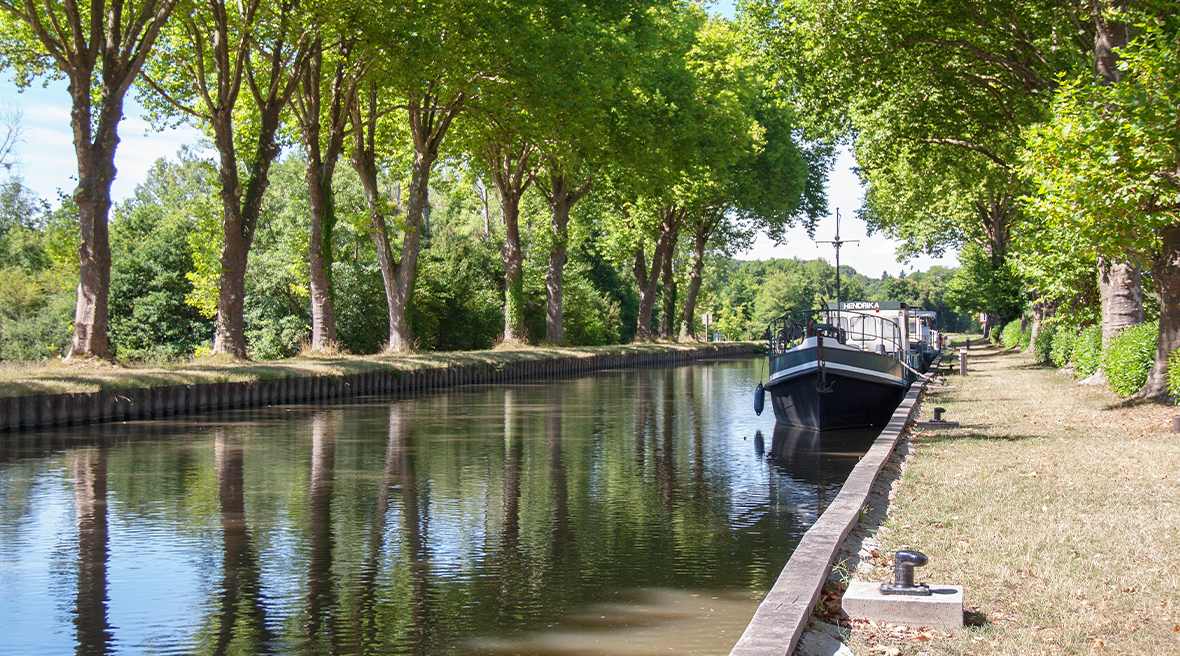
Journey down this canal to discover the vineyards of Sancerre and Pouilly
Canal de Briare
The Briare Canal is one of the oldest canals in France connecting the Loire and Seine valleys, both known for their stunning landscapes. At 57km long it is part of the Bourbonnais route from Saint-Mammès on the Seine to Chalon-sur-Saône on the Saône River. Historically, it was a direct way to supply Paris with food and fuel from the upper Loire and Allier valleys.
Begin your next boating holiday along this canal in Rogny-les-Sept-Écluses, named for its impressive seven locks and journey on to discover the vineyards of Sancerre and Pouilly. If you choose to stop in the medieval town of Sancerre, you can take guided tours and tastings from the city-centre, which is only a short distance from the banks of the canal.
La Charité-sur-Loire is one of several Villes des Livres (cities of books) in France. You can find more than 16 bookstores here, both secondhand and antiquarian. The city is also known for its Basilica Sainte-Croix-Notre-Dame, attacked by Joan of Arc in 1429.
Sweet-toothed travellers should stop in Montargis, specifically the Mazet Praline Shop. The praline treats served here are made according to the 1903 recipe of the shop’s founder, Leon Mazet. Try the signature caramelised almond, the ‘Praline Mazet de Montargis’.
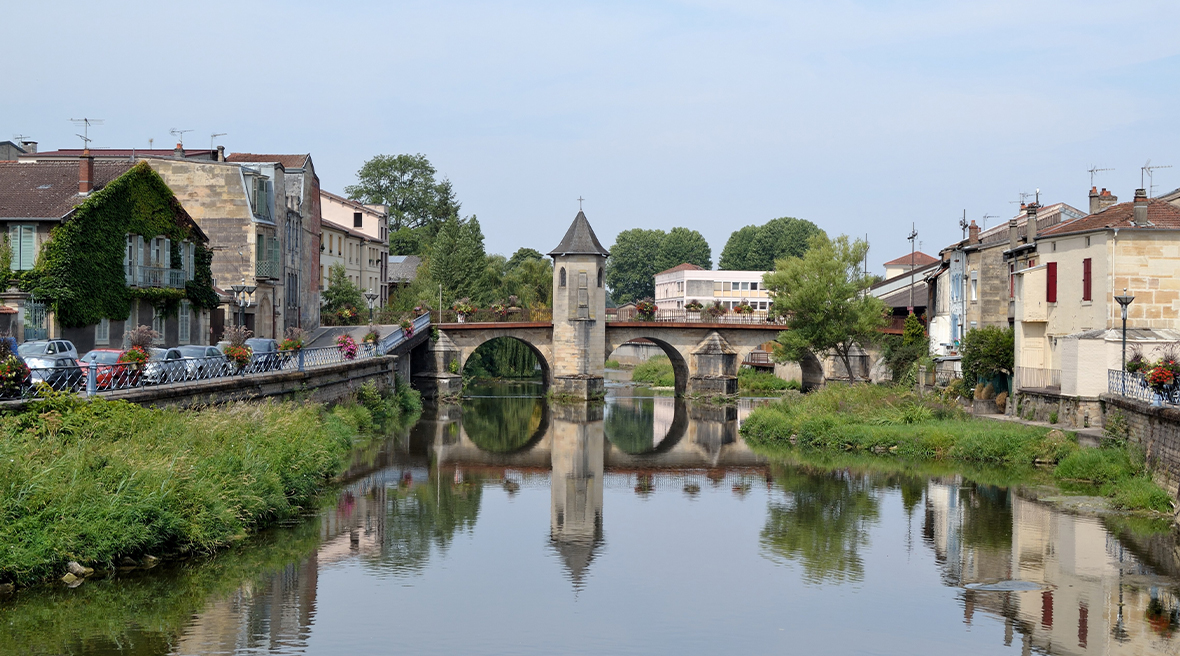
The Canal de la Marne au Rhin passes through the picturesque town of Bar-le-Duc
Canal de la Marne au Rhin
The Canal de la Marne au Rhin started its life in 1855 as a vital link between Paris and Alsace and Germany. It has 154 locks, and four tunnels, winding its way for 313km through interesting towns and departments until it reaches the port in Strasbourg.
Many choose to make a stop in Nancy, the capital of the department of Meurthe-et-Moselle and filled with magnificent architecture at almost every turn. Place Stanislas is a World Heritage Site dating to the 18th century where City Hall, the fine arts museum and a number of grand pavilions are connected by well-designed squares. Or, if you’re in the mood for fine dining, Nanc’s La Maison dans le Parc is a sophisticated Michelin star restaurant for you to treat your taste buds.
The town Saverne sits neatly at the foot of the Voges mountains. You’re guaranteed some lovely photo opportunities here, especially of Château des Rohan with its pillared façade. This sits right on the bank of the canal if you don’t have time to stop. Saverne is known as the town of the unicorn thanks to a statue of the mythical creature on Grand Rue.
For smaller villages, stop at Crévic, Maixe, or Einville. The port at Einville is a wonderful place to refuel and learn from some of historical landmarks to the first and second world wars.
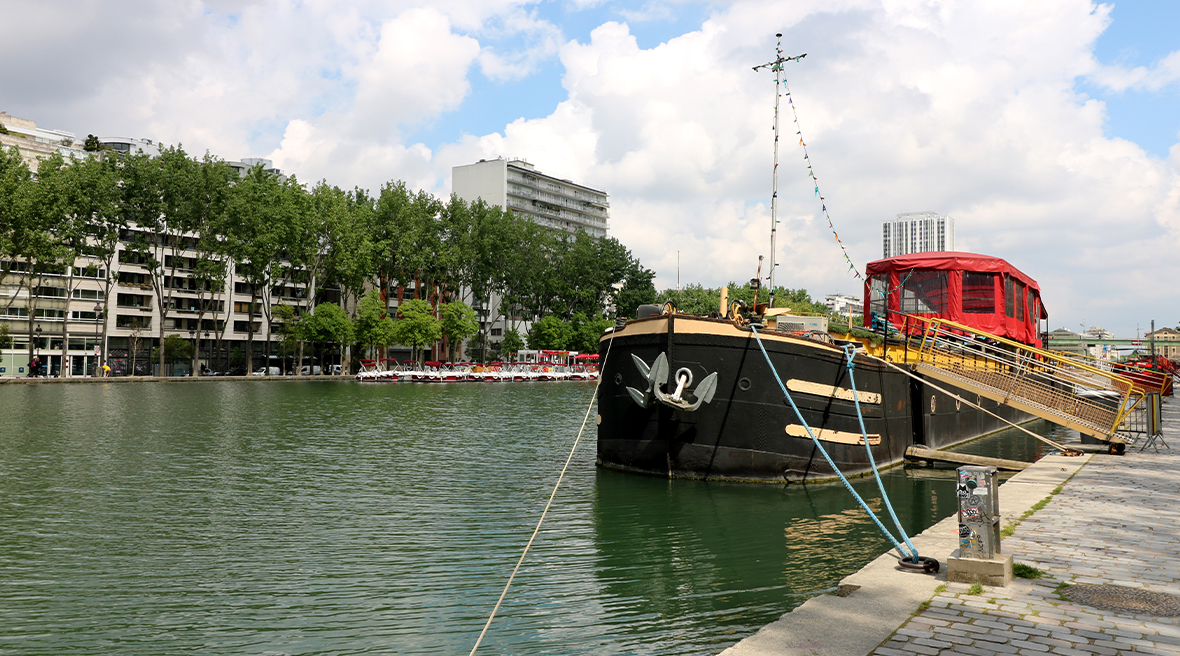
The Bassin de la Villette, the largest lake in Paris
Canal Saint Denis
Although it only runs through the city of light for 6.6km, The Canal Saint-Denis is popular for seeing the Basilica of Saint-Denis, an enormous tribute to gothic architecture and artistry. You can even visit the tombs of kings and queens of France. For something a little more modern, the Stade de France constructed for the 1998 World Cup has a museum celebrating its sporting achievements. There are seven locks along this canal's route and near Saint-Denis, the canal meets the Seine.
The Canal Saint-Denis connects to the Canal de l'Ourcq, at the Bassin de la Villette, the largest artificial lake in Paris in the 19th arrondissement. In summer the lake is transformed for Paris Plages, where sections are made suitable for swimming and soaking up some sunshine.
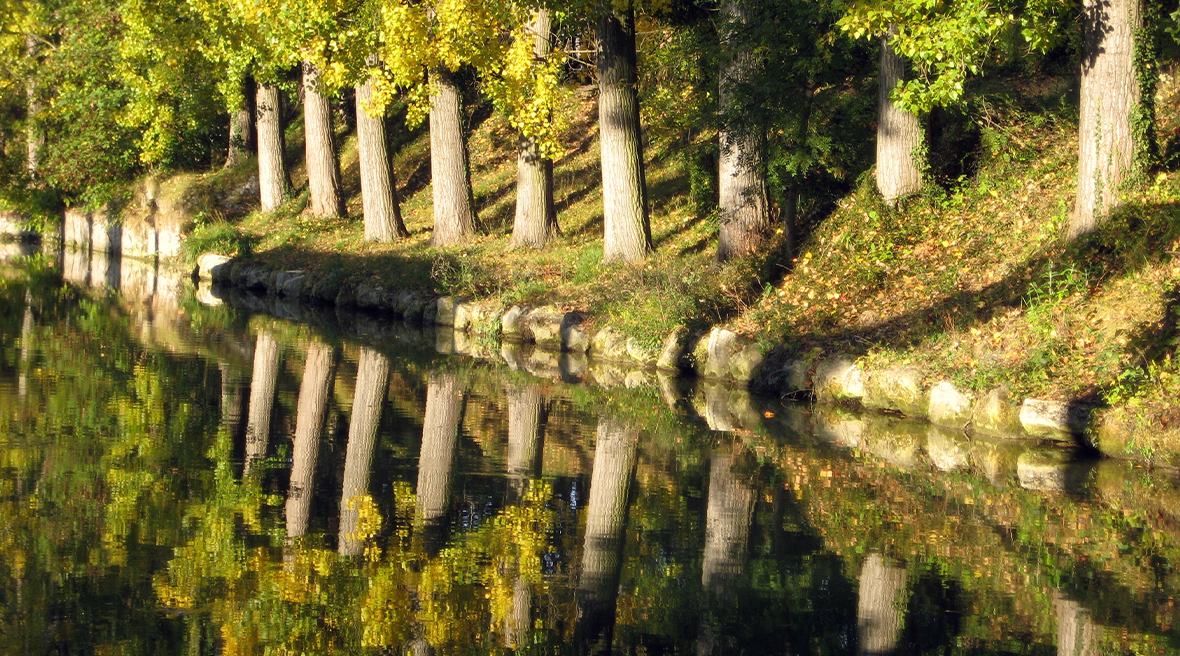
Dense trees line the pretty canal de l’Ourcq
Canal de l’Ourq
Canal de l’Ourcq, winds its way for 108km through the La Villette neighbourhood in Paris, which is an area full of creative energy. The annual festival of graffiti art is held on its banks — De l’Art à l’Ourcq sees around 30 artists create their own art on street furniture for a 10km stretch from Stalingrad to Aulnay-sous-Bois.
Cafés line either bank of the Canal de l’Ourcq, with a particularly lively atmosphere at Bastringue. You can play boules with the locals at BarOurcq or shop at the food market the Marché sur l’eau, held from Tuesday to Saturday on Place de la Rotonde. Stock up on products that are brought along the waters to Paris from all over the region.
Open a LeShuttle account to stay up-to-date with travel information, holiday inspiration and special offers.